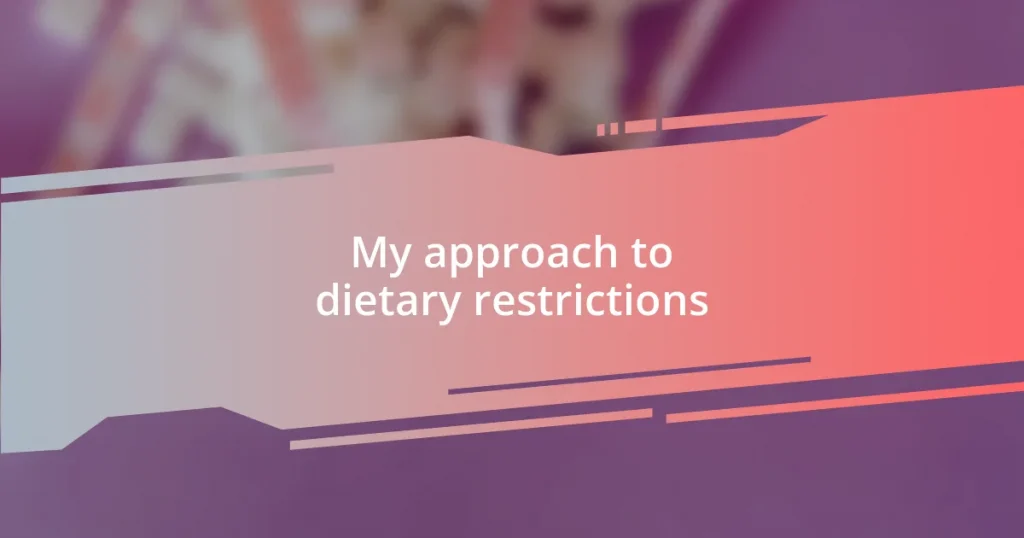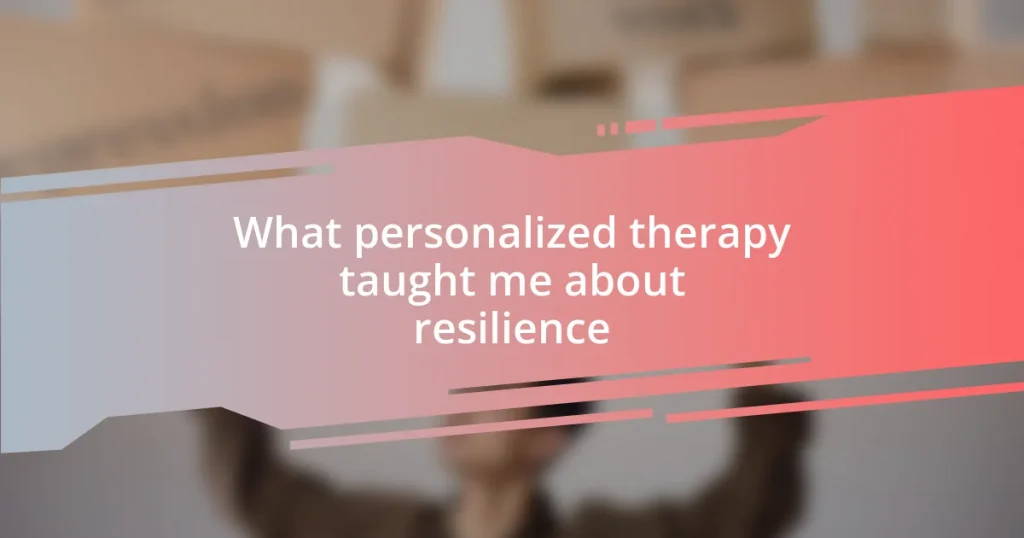Key takeaways:
- Dietary restrictions can arise from health conditions, ethical beliefs, or personal choices, often reflecting deeper values and requiring effective communication in social settings.
- Identifying and adapting to personal dietary needs is a crucial journey that promotes self-discovery and can lead to creative meal planning and cooking.
- Finding supportive resources, such as online communities and professional guidance, can empower individuals to manage dietary restrictions and rediscover enjoyment in food.
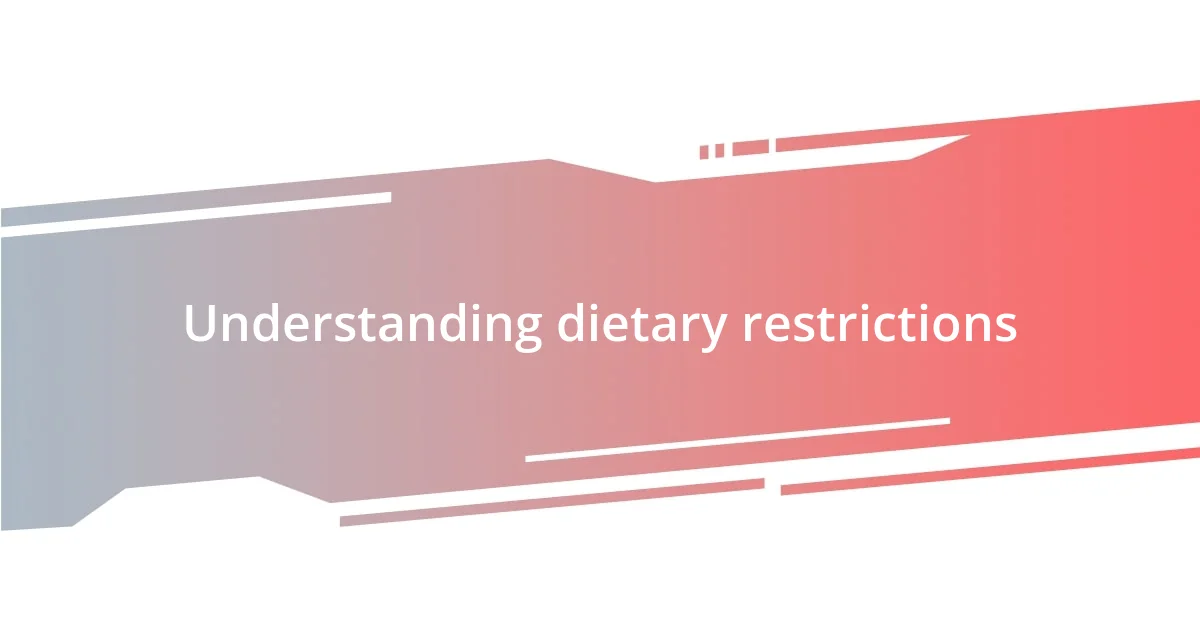
Understanding dietary restrictions
Dietary restrictions can stem from a variety of reasons, including health conditions, ethical beliefs, or personal preferences. I remember attending a friend’s dinner party where every dish was laden with gluten. As someone with gluten sensitivity, I felt a mix of anxiety and frustration when I realized I hadn’t communicated my dietary needs. How often do we find ourselves in situations where we need to speak up for our health?
Understanding dietary restrictions involves exploring the motives behind them. For instance, consider a friend who chooses a vegan diet for ethical reasons. Hearing her passionate stories about animal welfare opened my eyes to a whole new perspective. This experience made me realize that dietary choices often reflect deeper personal values or health challenges.
Navigating dietary restrictions can be tricky. It requires careful planning and often a willingness to educate others about your needs. When I started cooking more for myself, I found liberation in experimenting with flavors that respected my dietary limitations. What if we approached dietary restrictions not just as obstacles but as opportunities for creativity in the kitchen?
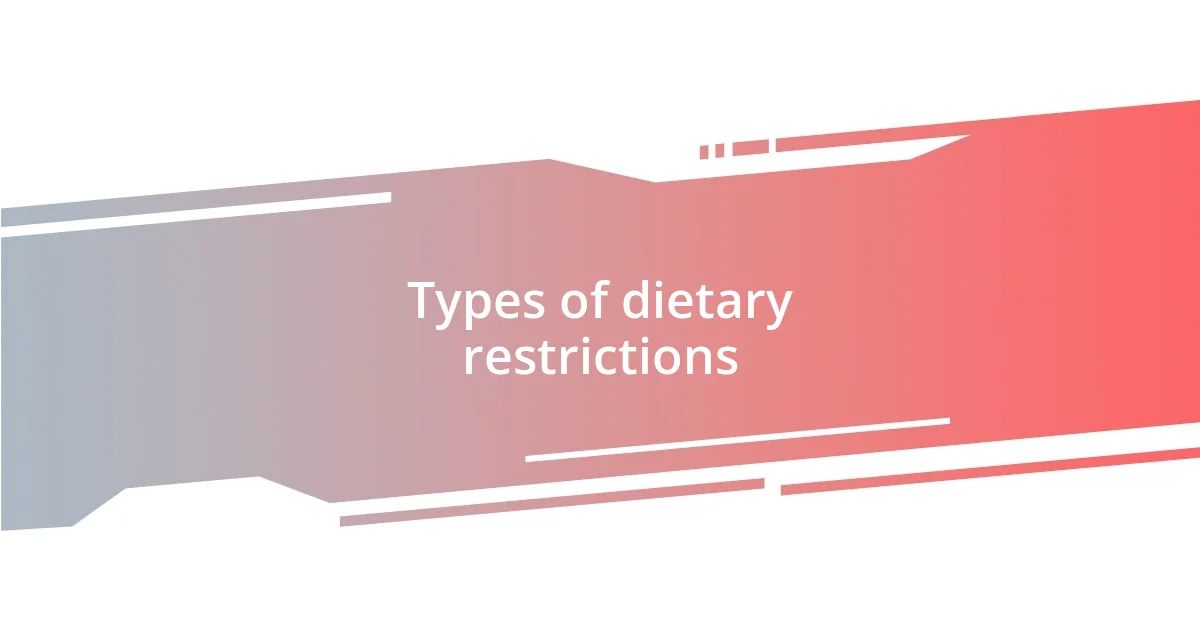
Types of dietary restrictions
Dietary restrictions vary widely, reflecting a spectrum of personal choices and health needs. From gluten intolerance to lactose sensitivity, each type presents unique challenges. I vividly recall the first time I tried to navigate a buffet with my lactose intolerance. Initially, it felt daunting, but over time, I learned to scope out safe options and even ask the staff about ingredients, which empowered me.
Many people adopt vegetarian or vegan diets, driven by ethical beliefs or health considerations. This choice often revolves around a commitment to animal rights or sustainability. I once participated in a cooking class focused on plant-based meals, which opened my eyes to the creativity and flavors that arise from respecting such dietary lifestyles. It’s fascinating how these restrictions can inspire a rich culinary experience rather than limit it.
Additionally, there’s a rising trend in food allergies, like peanut or shellfish allergies, which can be life-threatening. I remember dining out with a friend whose allergy required her to scrutinize every menu item, and seeing her meticulous approach made me appreciate the seriousness behind such dietary restrictions. It’s crucial for everyone—servers and chefs included—to understand and accommodate these needs, fostering a more inclusive dining experience.
| Type of Dietary Restriction | Reason |
|---|---|
| Gluten-Free | Health condition (e.g., celiac disease) |
| Vegan | Ethical beliefs or health |
| Lactose-Free | Health condition (e.g., lactose intolerance) |
| Nut Allergy | Food allergy |
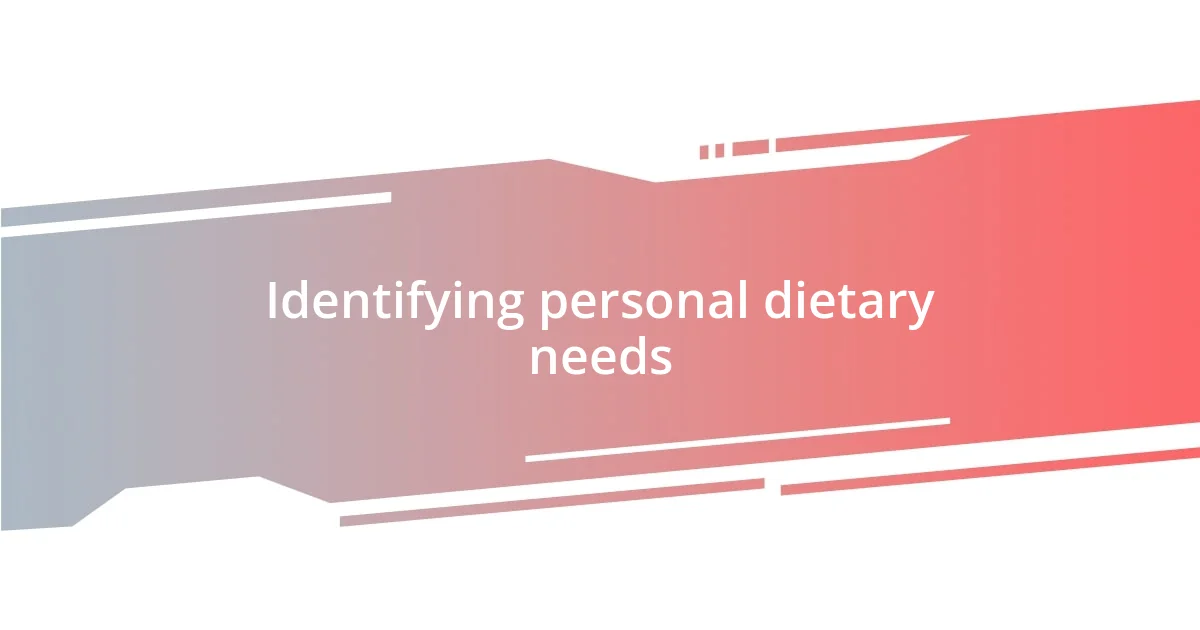
Identifying personal dietary needs
Identifying personal dietary needs is a deeply personal journey. I remember the moment I finally acknowledged my own lactose intolerance—it was as if a weight lifted off my shoulders. It was more than just an upset stomach; it was about reclaiming my comfort and well-being. Reflecting on my experiences led me to realize that tuning into our bodies and understanding signals—like bloating or fatigue—can be key indicators of what we need to avoid or embrace.
To pinpoint your dietary needs, consider these steps:
- Listen to your body: Pay attention to how different foods make you feel.
- Keep a food diary: Track what you eat and any reactions to help identify patterns.
- Consult health professionals: A nutritionist or doctor can provide guidance tailored to your specific situation.
- Experiment mindfully: Try eliminating certain foods for a set period to see if your health improves.
By embracing the process of self-discovery, you can tailor your diet in a way that truly supports your lifestyle and well-being.
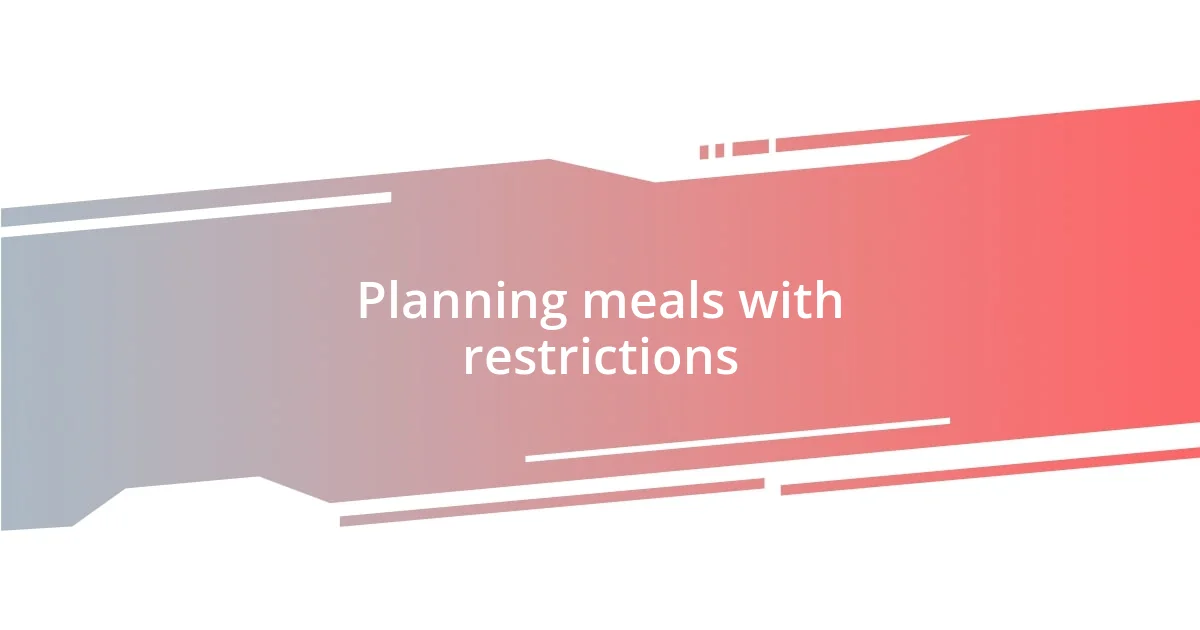
Planning meals with restrictions
When it comes to planning meals with dietary restrictions, I find that creativity is key. I remember one week when I decided to prepare gluten-free meals for a friend visiting me. Scouring the internet for recipes led me to invent a delicious quinoa salad with roasted vegetables that amazed us both. Each meal was not just about avoiding gluten; it was an opportunity to explore new ingredients and flavors.
Once I embraced meal planning, it transformed how I approached my own lactose intolerance. I began batch-cooking dairy-free sauces and soups on weekends, which made my weekdays so much easier. Have you ever felt overwhelmed by your weekly grocery shopping? I used to, until I created a structured list based on my meal plan, reducing the stress and ensuring I had everything I needed. This way, I didn’t just limit my choices; I opened the door to delicious accessibility.
I also discovered the power of meal prep for accommodating various dietary needs in my circle of friends. For instance, hosting a dinner party became a fun challenge where I catered to multiple preferences, from vegan dishes to nut-free desserts. It made me realize that planning meals with restrictions isn’t about what you can’t have—it’s about finding joy in the flavors and experiences that connect us all at the table. What’s your favorite dish that accommodates a dietary restriction? I’d love to hear about it!

Navigating social situations
Navigating social situations with dietary restrictions can be daunting, and I completely understand that feeling of anxiety when faced with a menu full of tempting but unsuitable options. One evening, I found myself at a friend’s birthday dinner, and I had to gracefully decline a beautiful pasta dish laden with cream. Instead of feeling left out, I asked the waiter for alternatives and was pleasantly surprised when he offered a lovely grilled chicken salad. Have you ever had that moment where a simple request leads to unexpected satisfaction?
I’ve learned that communication is essential. Before attending events, I often reach out to the host and express any dietary concerns. A few months ago, I informed my colleague about my gluten intolerance before a work potluck. To my delight, she not only provided a gluten-free option but also told me how she enjoys experimenting with different flours. This sort of openness fosters understanding and often inspires others to consider dietary needs, turning what could feel like an awkward conversation into a shared experience.
Sometimes, I feel like a culinary detective at social gatherings, searching for safe options while enjoying the company around me. I remember a picnic where I brought my own snacks, which led to others asking about my dietary restrictions. Surprisingly, a few friends joined me in sharing their own challenges. It turned into an insightful discussion about food choices and self-care! This taught me that navigating social situations isn’t just about dietary restrictions; it’s an invitation to connect, share stories, and build a supportive community. What has been your experience in finding your place at social events?
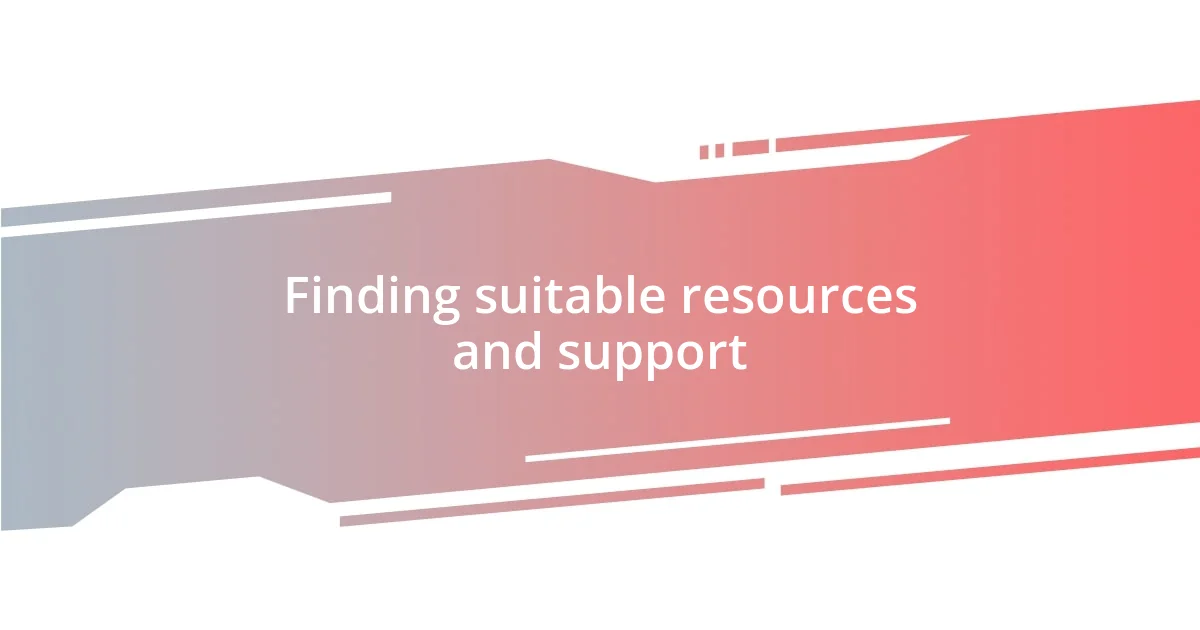
Finding suitable resources and support
Finding suitable resources and support can truly make a difference when managing dietary restrictions. I recall the time I joined an online community focused on gluten-free living. At first, I was hesitant, thinking it wouldn’t cater to my style, but the shared recipes, tips, and support became a treasure trove. Have you ever stumbled across a group that just clicks? It felt like finding a second home where everyone understood my journey and struggles.
Navigating through nutrition books and websites can be overwhelming, but I often draw insights from credible sources. One resource that has stood out for me is a well-rounded dietary blog by a nutritionist who also faces allergies. I remember trying a breakfast smoothie recipe I found there—it not only fit my limitations but was also packed with nutrients. Have you ever tried a recipe that you later realized was life-changing?
I also believe that personalized support can come from professionals like dietitians. The first time I consulted one, it was like lifting a weight off my shoulders. Instead of feeling restricted, I left with a tailored plan that included foods I loved. Finding someone who “gets it” can be incredibly empowering. So, what support have you sought in your dietary journey? It might just lead you down a path of rediscovery!
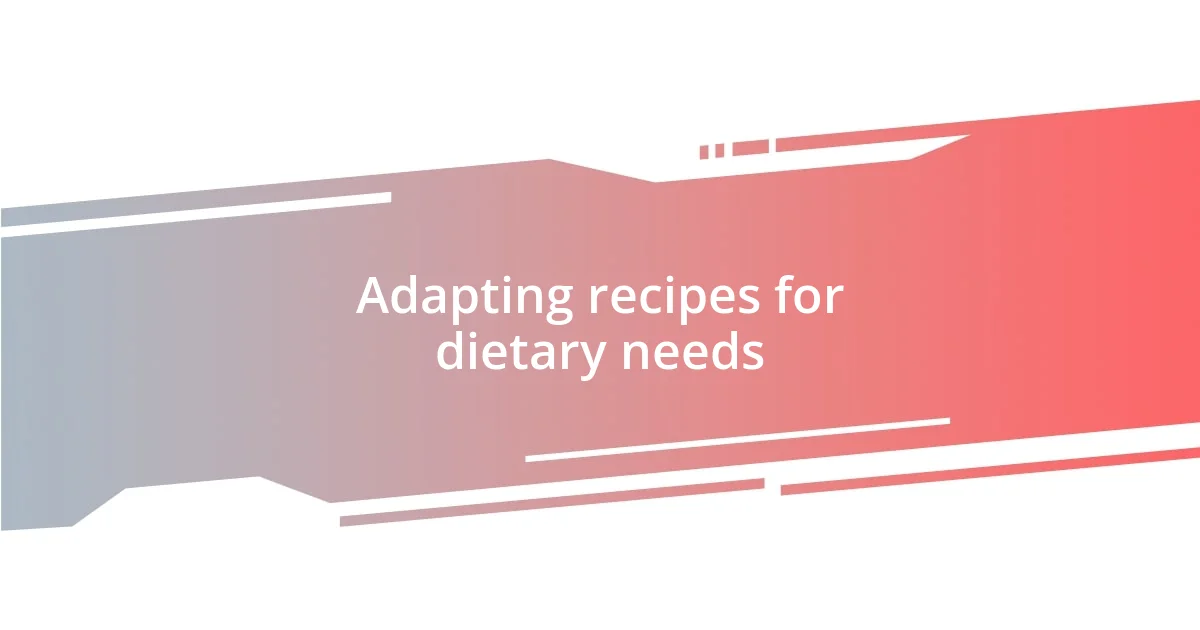
Adapting recipes for dietary needs
Adapting recipes for dietary needs can be a creative adventure. I remember the first time I had to modify my grandmother’s famous chocolate chip cookie recipe due to my dairy allergy. Instead of feeling like I was losing something special, I swapped out the butter for coconut oil, and to my surprise, the cookies turned out to be even more delicious! Have you ever discovered a twist on a classic that felt like a revelation?
Sometimes, I’ve faced challenges that felt insurmountable, especially when looking for substitutes in baking. There was an occasion when I wanted to make a cake for a friend’s birthday but needed it to be vegan. It took a bit of experimentation, but replacing eggs with flaxseed meal worked beautifully, and the cake turned out moist and flavorful. This taught me that every dietary restriction comes with new possibilities if you’re willing to experiment. What’s the most unexpected ingredient swap you’ve tried that ended in a culinary success?
On occasion, I’ve found that adapting recipes can bond people together. For a family gathering, I prepared a dairy-free lasagna, using cashew cream instead of ricotta. As my relatives tried it, their faces lit up with surprise, and they couldn’t believe it was dairy-free. This experience reinforced my belief that adapting recipes isn’t just about feeding ourselves but about creating shared experiences that everyone can enjoy. Have you ever adapted a dish that surprised everyone at the table?










